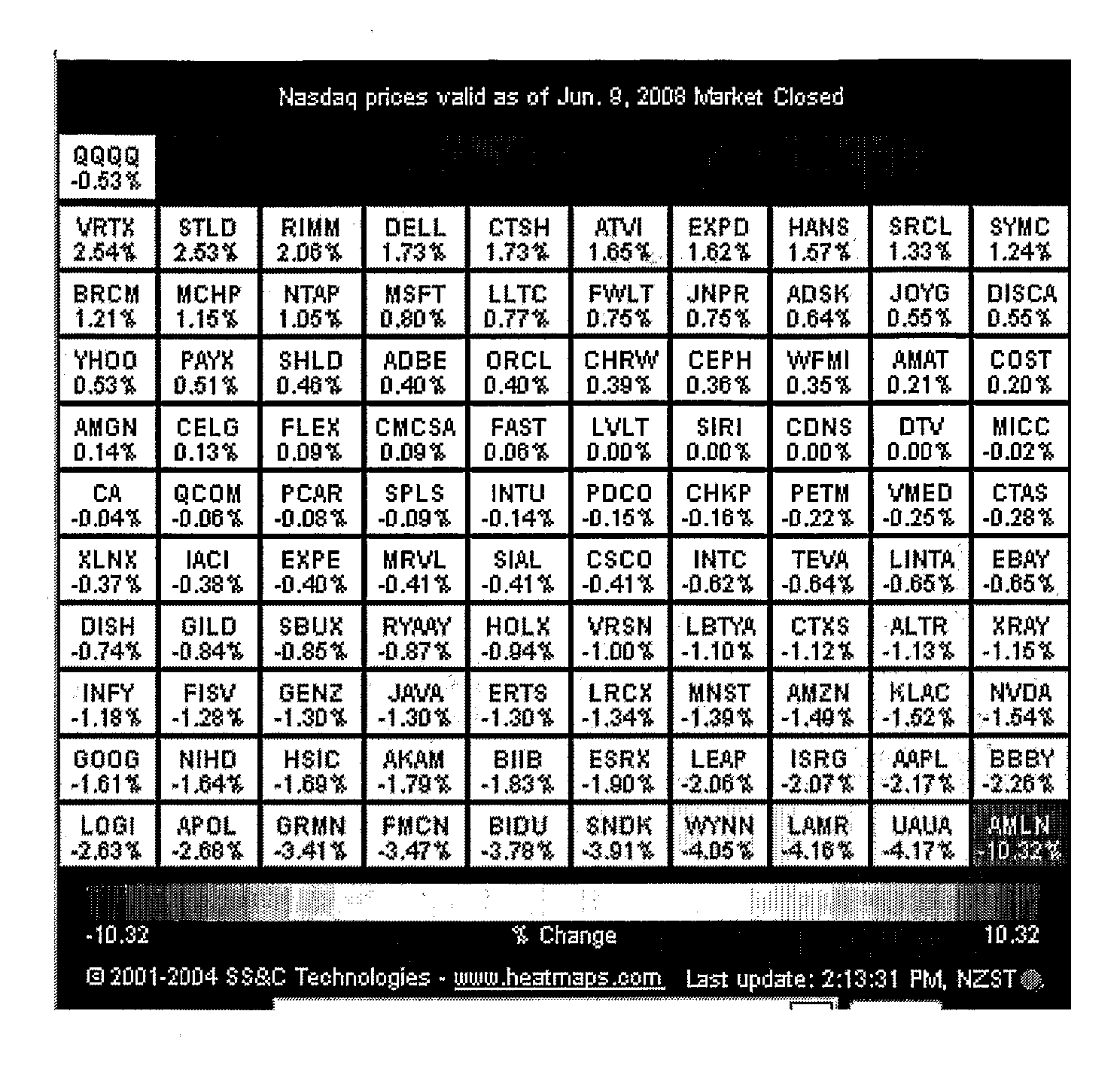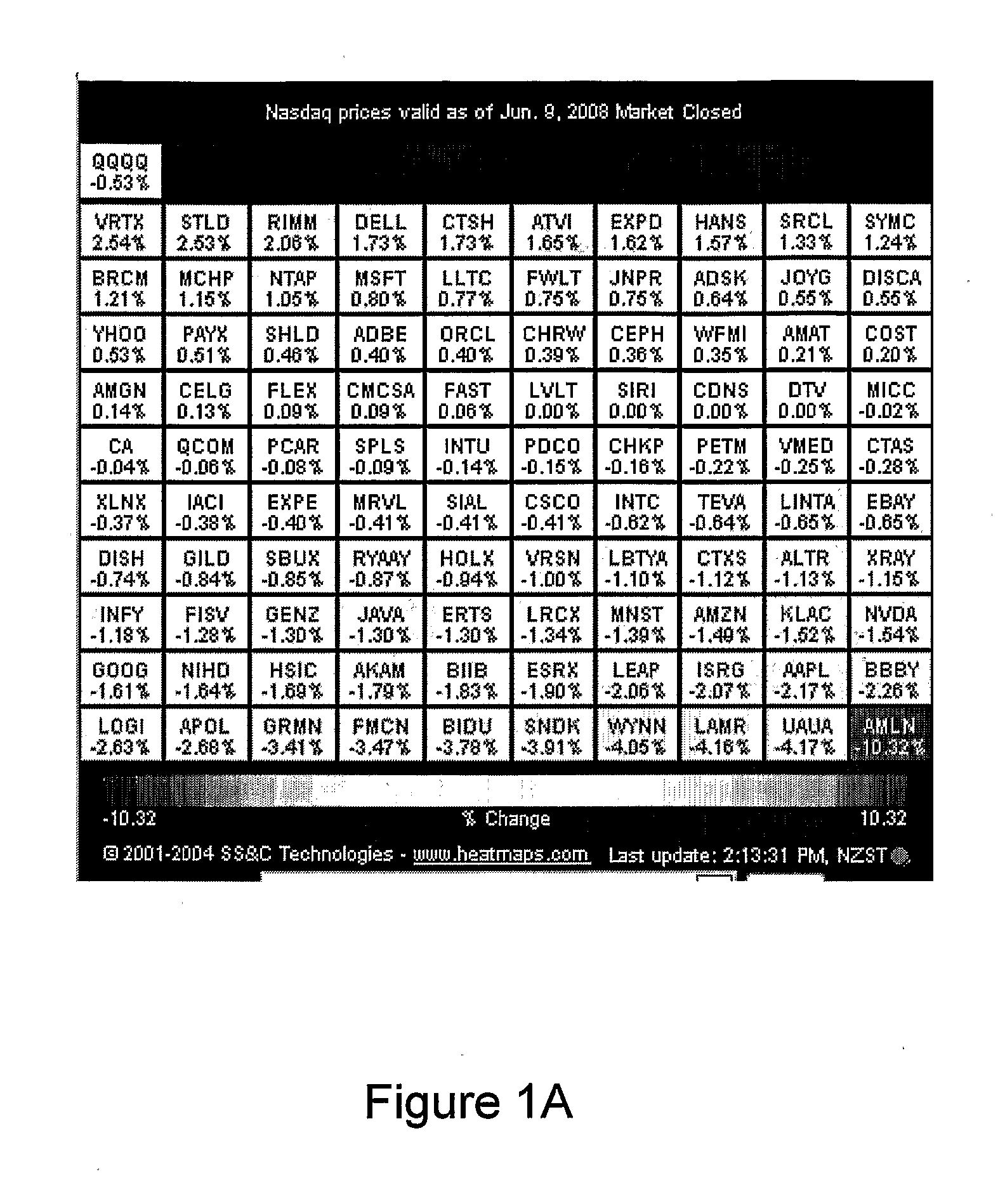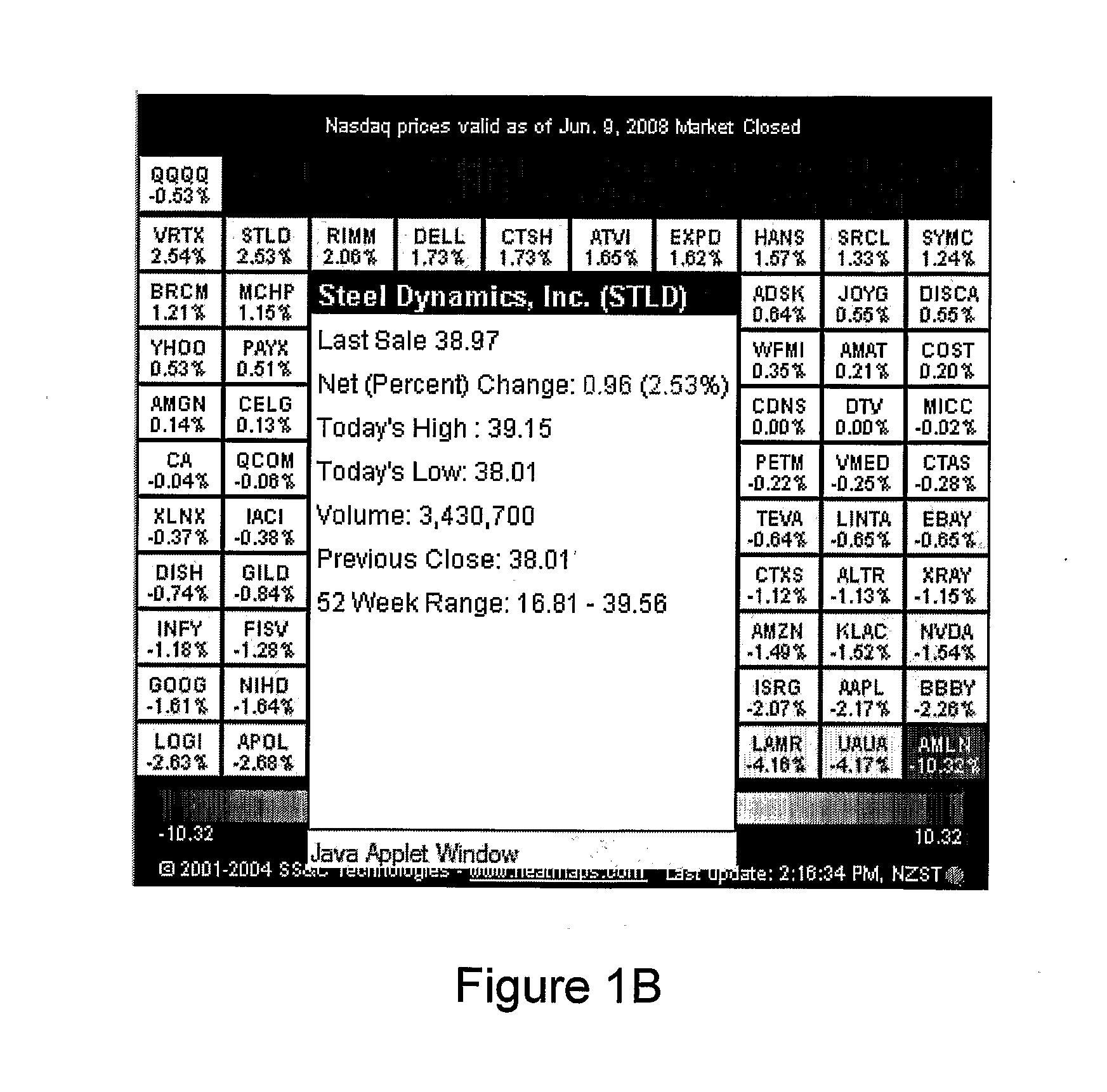Methods, apparatus and systems for data visualization and related applications
a data visualization and data technology, applied in image data processing, office automation, marketing, etc., can solve the problems of less meaningful charts, less data, and well established and often poorly implemented data representation methods in traditional charts
- Summary
- Abstract
- Description
- Claims
- Application Information
AI Technical Summary
Problems solved by technology
Method used
Image
Examples
first embodiment
[0649]According to this embodiment there is shown in FIG. 11Q a conceptual system diagram of a data visualization system 11Q01 which includes a data retrieval module 11Q03 configured to enable the retrieval of data from a data storage module, which is in communication with the data visualization system.
[0650]The system further includes a smoothing module 11Q05 and an interpolation module 11Q07 which are arranged to receive the data obtained by the retrieval module. Each of the smoothing module and interpolation modules are controlled using specific algorithms to create, from the input data, a smoothed surface and an interpolated surface respectively. The smoothed and interpolated surfaces are then combined by a surface combining module 11Q11. The output of the surface combining module is provided to a rendering module 11Q13, which is arranged and controlled to create the appropriate signals for the output device 11Q15, which in this embodiment is a display module, which is used to v...
effect example
Radius Effect Example
[0673]As an alternative to the IDW example described above, a further IDW example is provided that incorporates a radius effect to calculate the weight factor as described below.
[0674]According to this example, the radius effect may be used to calculate the weight factor Wi. The radius value R is calculated based on the direct radial distance to the furthest point. That is, it is calculated by determining the distance for all points by taking the square root of the sum of the squares of the x and y difference values, and using the largest of these distance values. For example, the radius value between points x,y (5,5) and x8,y8 (7,10) is the square root of (5-7)2+(5-10)2=5.385165, as shown in the table below.
[0675]The weight factor is calculated as follows using the calculated R value:
Wi=(R-diRdi)2∑j=1n(R-djRdj)2
where R=max(di)=distance between (X, Y) and the farthest point (Xi, Yi)
[0676]Therefore, the weight given to the furthest point is 0, whereas the weight ...
third embodiment
[0733]In a third embodiment, the system generates the surface using a three step process wherein a first step includes generating a surface that has primary smoothing, a second step includes secondary smoothing adjustments in order to get a smoother surface, and a third step includes a final interpolation adjustment that makes the surface pass exactly through the data points
[0734]The first smoothing step may be calculated with a very large radius, for example (more smoothing is applied), whereas subsequent smoothing may use a smaller radius in order to show finer smoothed details. Using this process may on some datasets reduce the visual anomalies caused by varying densities in data points.
[0735]The system modules as described, above and in FIG. 11Q may be used to implement the following steps.
Step 1
[0736]The smoothing module is used to apply a primary smoothing step to the input data to create a surface that is near to the source points. A function, such as a weighting function, ma...
PUM
 Login to View More
Login to View More Abstract
Description
Claims
Application Information
 Login to View More
Login to View More - R&D
- Intellectual Property
- Life Sciences
- Materials
- Tech Scout
- Unparalleled Data Quality
- Higher Quality Content
- 60% Fewer Hallucinations
Browse by: Latest US Patents, China's latest patents, Technical Efficacy Thesaurus, Application Domain, Technology Topic, Popular Technical Reports.
© 2025 PatSnap. All rights reserved.Legal|Privacy policy|Modern Slavery Act Transparency Statement|Sitemap|About US| Contact US: help@patsnap.com



